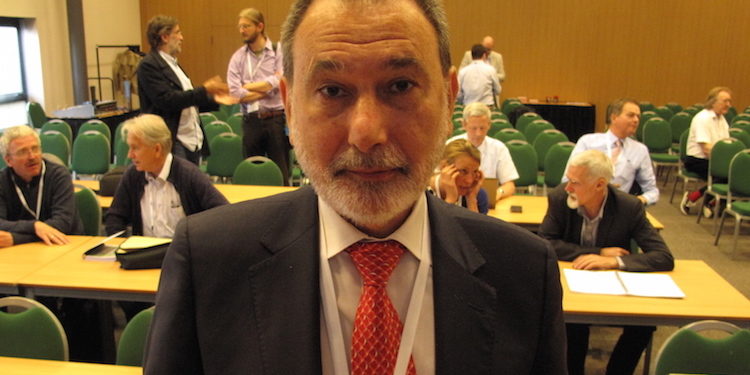Policymakers were faced with a choice of working out all the answers before embarking on the Landing Obligation, or making it law and then working out the details in the process, according to Ernesto Peñas Lado, Director for Policy Development and Co-ordination at DG Mare.
Commenting at the IIFET 2016 conference in Aberdeen he said that it was known that the new policy would present challenges, but the decision was taken to press ahead.
‘We knew there would be challenges and we knew that we didn’t have the answers,’ he said. ‘The choice was to provide all the answers before making this compulsory, or to make it compulsory and then work out the answers – not just in Brussels, but in the Member States’ capitals – and to use the phase-in period to work out how to do all this.’
He explained that this was done in the knowledge that it would not be an easy transition, but also with the knowledge that if the decision had been to opt for the long process of solving problems before implementation, the likelihood would have been that nothing would have happened and the Landing Obligation would have disappeared into distant future.
‘The Landing Obligation is not a complete discard ban,’ he stressed.
He commented that it is important that the move down the route to decentralised regulation advances rapidly.
‘The sooner, the better,’ he said. ‘This is a revolutionary approach to legislation and adapting to something new comes with a cost, which isn’t necessarily cheap. It means investment, in vessels and gear, as well as new approaches.’
‘It’s also necessary to provide public funding under the new EMFF and there are opportunities there that do no increase capacity. It’s important that the industry is not short of public support. If the Member States do not do this, then come to the European Commission. If you’re short of funds, the Commission is there to help. We are there to make sure you are not short of public support.
‘In political terms, there’s no way back from the Landing Obligation,’ he said, commenting that the question of choke species was raised immediately as the Landing Obligation was being formulated, and mechanisms such as the 9% inter-species flexibility that has already been applied in the Baltic for herring and sprat have been put in place, but in mixed fisheries the problems become more acute.
‘We knew that TACs for different species in mixed fisheries would cause problems, and although the NGOs protested against this, it was a reasonable way forward to smooth out the inter-species relationships,’ he said and added that at present there are eight discard plans, seven of them with de minimis exemptions, and quota swaps had also been envisaged as one of the routes to ensure that quota was available as landing TACs morphed into catch TACs.
‘But quota swaps have become a problem rather than a solution,’ he said. ‘The answer we get from the member states and the POs is that quota swaps don’t work, so we did some number-crunching and found that while swaps had been increasing, the amounts had decreased, and in 2015 the trend was broken as TACs increased and swaps decreased.’
He suggested that the reason could lie with member states being unwilling to swap, preferring instead to keep those entitlements back in case of chokes later in the year, or it could be that the inter-species flexibility has rendered swaps less necessary.
‘But we have a problem here that needs to be resolved. We had counted on quota swaps as one of the main instruments for dealing with choke species. So how do we enhance the market for quota swaps?’ he asked, commenting that there are options for increasing transparency of trading, publishing a database that identifies unused quotas, or facilitating direct trading between POs across borders – of introducing other commodities than fish that could exchanged for quotas – if the member states would make this possible.
‘But quota swaps are voluntary. Nobody is forced to make these swaps,’ he said.









